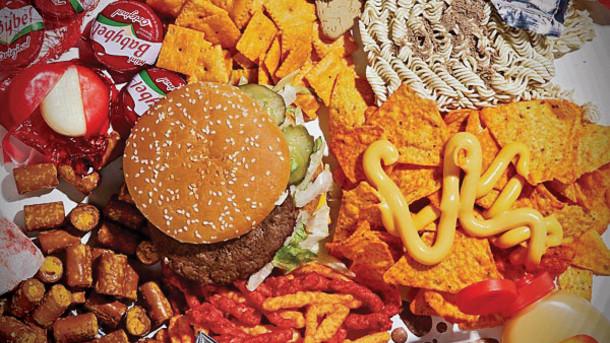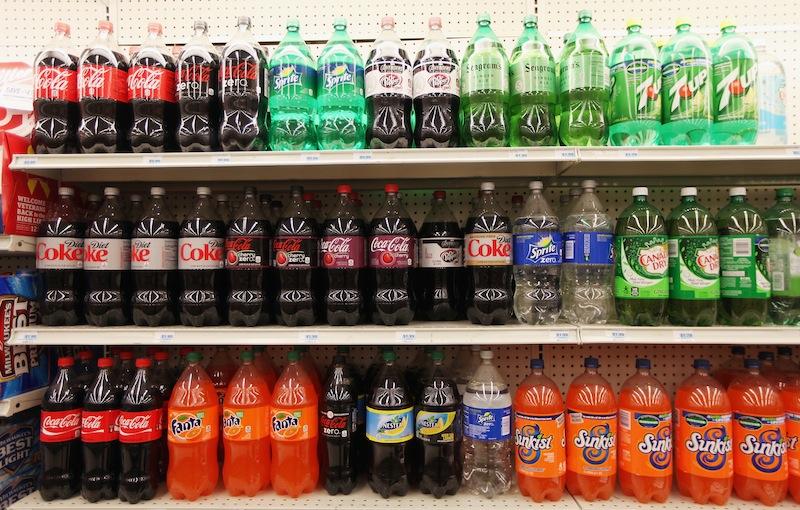Sugar Rush
April 21, 2015

Corn is evil, sugar will kill you, salt is sadistic and fat just got out of prison. Meet the latest and newest bad guys on the block; the maniacal masterminds in the multibillion dollar industry of processed foods.
Enterprise Goliath’s have created a simple theorem to make more money: If their products taste better, their consumers will buy more. This means that they will throw out any morals for creating a nutritious product, they will go to lengths to dupe customers through misleading advertising and they will try to stretch the FDA’s rules concerning packaging and nutrition labeling to the limits.
Welcome to today’s world of malnutrition, an epidemic that has reached millions of people through the race to make a cheaper, better (tasting) product.
Processed foods all began in the 1940’s with the start World War II. Preservatives were put into meat, chocolate was mass produced, vegetables were freeze-dried and additives were being added to flour products. From there, the new era of foodstuffs hit the ground running as people jumped on the opportunity to have quick and easy meals.
In the 50’s, housewives were buying T.V dinners, ready to bake Sara Lee pies and the newly introduced ‘frozen fish fingers’. Ad campaigns flipped through the pros of their foods, with taglines ranging from “For pep and vigor — VITAMIN doughnuts” to “TANG — more vitamin C than orange juice!”. However, what these ads failed to convey was that the only vitamins present in ‘Vitamin Doughnuts’ was a flour enriched with Thiamine, or vitamin B1 and Tang contained an astonishing quantity of nine grams of sugar for every eight fluid ounce serving and virtually no fruit juice. In many cases, ads promoting products were hoaxes: misleading and inaccurate, but able to survive regulations due to major loopholes.
This misleading advertising exists today, but at a greater level as packaging techniques bury nutritional turn offs by slapping phrases like ‘all natural’, ‘fat free’ and ‘free range’ onto packaging. Be wary of these terms. Saying that something is ‘fat free’ doesn’t guarantee you a free ride; most times these products are loaded with sugar, and ‘sugar free’ labeled items are usually loaded with fats.
All natural products can still be injected with chemicals and free range meats aren’t really free range at all; the FDA simply requires an undesignated amount of exposure to natural air, so don’t be thinking the chicken you ate for dinner was running around on Uncle John’s farm.
Although these companies are making bigger bucks as more people buy their products unknowing of the content inside, Americans are filling their bodies with inordinate amounts of salt, sugar, corn and fat. These four villains seem harmless enough and taste great, but in reality they are in everything that is prepackaged and will rob you of any nutritional value you would otherwise be getting.

Soda is found commonly in every American household. It is a staple for kids and adults as well. However, it is also a multi-billion dollar business that has a few main competitors, including Pepsi, Coke and Mountain Dew. These seemingly different products have one thing in common; the top ingredients on all bottles are high fructose corn syrup and sucrose.
Let’s look at a 12 oz can of Pepsi; it contains 41g of sugar, 30 mg of salt, and has 150 calories. 41 grams of sugar is approximately 10 teaspoons, four teaspoons more than the FDA recommended daily amount. So, if you drink a soda, imagine crunching down ten sugar cubes in a row… and don’t forget to wash it down with a cup of water.
The American public pays an average of 106 billion dollars in dental bills per year, according to a study by the Pew Center on the States. Although the dental industry reaps huge rewards from this newly found addiction to sugar, the rest of the public is heading in a downward spiral… the question is, how bad has it gotten?
In 1900, the average american consumed 90 pounds of sugar per year. Today, the average american consumes 150-170 pounds of sugar per year and almost twice as much per day. The increase is astounding. In a mere hundred years, our sugar intake has increased by 188 percent.
Americans certainly haven’t changed their buying patterns. With the sky high prices of organic goods, a family trying to save a few pennies can feed their kids more with processed fare. In the consumer mind it makes sense; you get more bang for your buck with canned and frozen foods compared to the $24 farm raised chicken breast and $6 organic cucumbers.
Nutrition concerns aren’t an issue in the consumer mind as they simply aren’t aware that they are buying a product that has zero nutritional value. In the 1900’s consumers didn’t have this issue as processed foods hadn’t hit the market just yet. People could buy food without being afraid inordinate amounts of salt, sugar, fat, and corn had been injected into their supper.
This predicament we see is simply another complication of the developed world around us. As corporations boom it is increasingly hard to monitor the quality of their product. Bureaucratic entities such as the FDA, the U.S Department of Agriculture (USDA) and the Federal Trade Commission (FTC) are supposed to regulate aspects of various produced products ranging from food to tobacco.
The FTC “protects consumers by stopping unfair, deceptive or fraudulent practices in the marketplace,” according to their website. Ironically, they must not be doing a very good job if the majority of the population is not aware of the contents of the food they are consuming.
Just one small example of the ineffectiveness of these bureaucratic departments, Americans would be better off disbanding these agencies; saving millions in tax dollars and should instead initiate a course free of charge informing the public on how to see through these corporations and ‘shop smart’.
So, next time you go to the grocery store, take off your blinders and actually look at all of the food around you.
In the cereal department everything is coated with sugar, even those marketed in healthy boxes with natural labels. Juice boxes are packed with fructose, cookies are jammed with not only sugars but fat and salt. Corn syrup is dripping from breads and baked goods; coating the aisles. Put on a pair of dark glasses, ditch your jacket, and walk slowly out of the store leaving those four incognito criminals to wallow in their own vat of corn, sugar, salt and fat.









